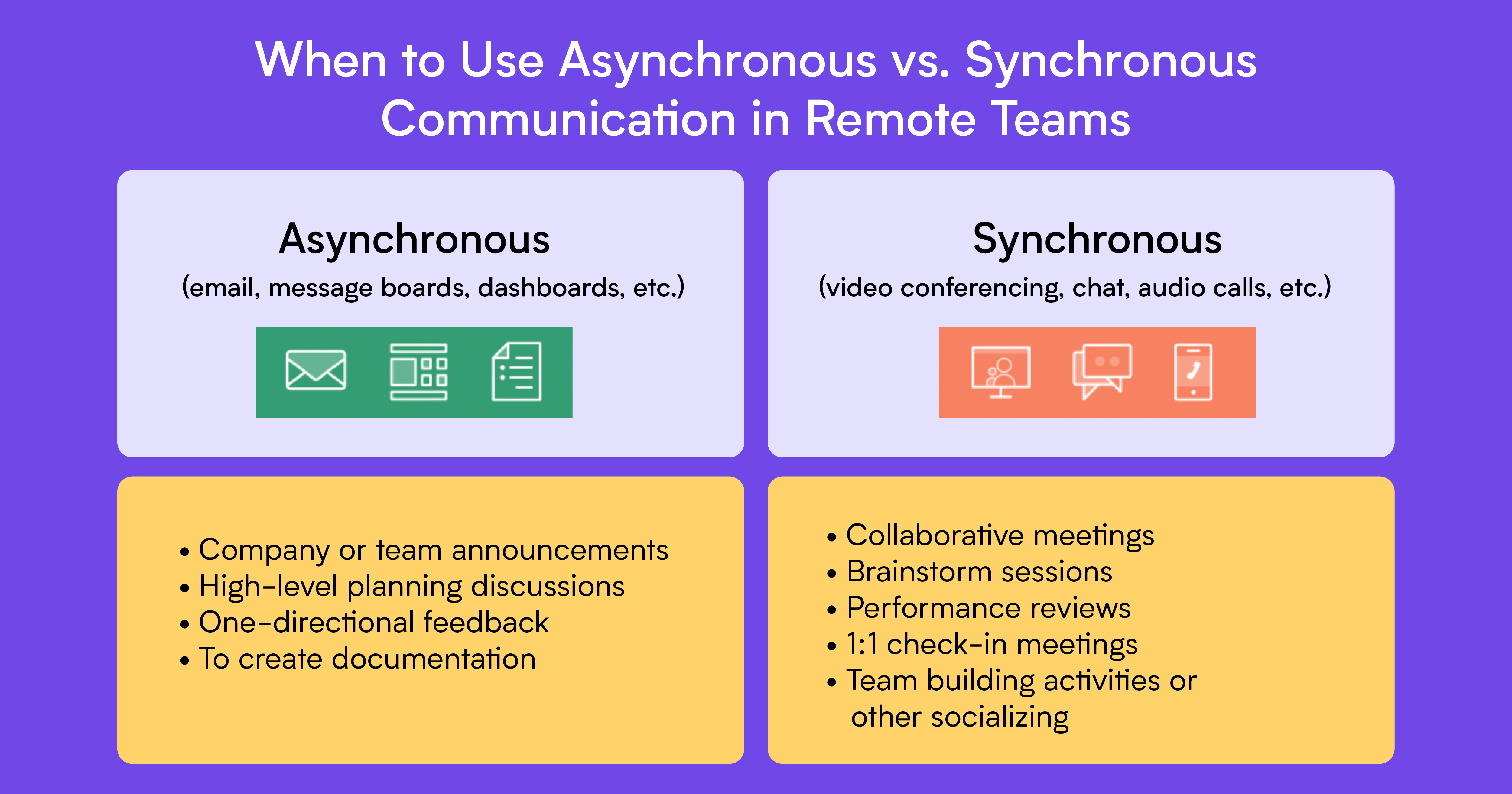5 tips to master asynchronous communication in a remote environment

Asynchronous communication is when people can communicate without being present simultaneously. According to Hailley Griffis, Head of communications and content at Buffer, “it’s an interaction between teammates that doesn’t happen live, but rather whenever is convenient for each teammate.
It can take many forms, including written, audio, or video messages. The goal is to empower teammates to take more control over their schedules and offer greater flexibility in the workday.”

Here are the 5 tips to enact this in your remote workplace:
1. Create a documentation culture
Documentation is key to asynchronous culture. It means keeping a record of everything and delivering information that anyone can access without being present simultaneously.

Start with creating a company handbook. In it, mention your companies value, mission, when to communicate synchronously versus asynchronously, how to communicate synchronously (tools you’ll use, best practices), and general employment information (hiring process, performance review procedures, how to conduct yourself in a remote team, and more).
Build the handbook on Notion, so anyone can refer to it and search for desirable information across groups. Doing this will save you time and help you build a company where employee functions in sync with your culture.
Don’t restrict documentation to creating a handbook. Document everything that you’ll have to share with everyone. For example, assign a facilitator to document meeting notes or best record the meeting—so that people who didn’t attend it are in the loop of what was said and what to do next.
2. Adopt Writing
Your internal communication should be writing-first, and meetings should be the last option.
Two reasons why:
a) Writing stores information and promotes collaboration. Not everyone can attend a meeting at a said time due to different time zones, but when you communicate through written communication, they can respond when they see it and collaborate.
b) It can also be easily indexed and searched for later—making everyone accountable.
Prepare a guide on how to write and distribute it across the company. I like the Amazon writing guide
3. Over-communicate

Compared to in-office work, remote work offers fewer chances for contextual sharing. You have to be intentional about being clear and concise with your asks. Add relevant resources, links, instructions for the next steps, and a deadline—so the other person knows what you’re talking about and when they can respond.
For example:
Under-communication and vague ask:
“Can you send me the project?”
Over-communication and being specific:
“Can you send me our social media report by the coming Monday by 5 pm EST? I’d like to know the number of views, engagement, followers, and leads. Thanks!”
4. Don’t expect an immediate response
The heart of asynchronous communication is not expecting people to respond immediately. Embrace the idea that people can’t reply instantly for many reasons: time zones, different work routines (some prefer mornings, some want to work at night), or because they have to think to provide a helpful answer.
So, don’t rush response time. Resist the urge to get the response, “now.” It incentivizes poor decisions. Give yourself (and others) the flexibility to think and then reply.
5. Know when to use synchronous communication

If something is complex (deserves feedback from plenty of people) and time-sensitive (you’ve to come to a decision soon), inform your employees that they should prefer synchronous communication during those instances. Make sure they know what *such* times are (write in your handbook about it) and the communication tools they should use.





